Estimation of Energy Expenditure Using a Patch-Type Sensor Module with an Incremental Radial Basis Function Neural Network
Abstract
:1. Introduction
2. System Architecture
2.1. General System Description
2.2. Sensor Module
3. Incremental RBFNN
3.1. RBFNN
3.2. Local RBFNN Based on CFCM Clustering
- [Step 1]:
- Perform LR modeling from the original input-output data points. Here, the residuals obtained by LR are used as output variables in the design of the local RBFNN, based on CFCM clustering.
- [Step 2]:
- Generate contexts in the residual (output) space. These contexts are produced through a uniform distribution, while the contexts are characterized by triangular membership functions with a half overlap between neighboring contexts. The cluster centers in each context are then estimated using CFCM clustering. Here, the number of the final clusters is c × p, where p is the number of contexts, and c is the number of clusters in each context.
- [Step 3]:
- Design the RBFNN based on CFCM clustering. Here, the number of nodes in the hidden layer is equal to that of the final cluster. The weights are obtained using least squares estimation (LSE) in one-pass, without back-propagation (BP).
- [Step 4]:
- Combine the outputs of LR and RBFNN as followswhere Y is the final output of the incremental RBFNN, as shown in Figure 3. The z and E are the outputs of the LR and the local RBFNN, respectively. Therefore, the modeling error based on LR as the global model is compensated by the local RBFNN, based on specialized CFCM clustering using the concept of information granules.Y = z + E
4. Experimental Design and Results
4.1. Laboratory-Based Experiment
4.2. Field Test
5. Conclusions
Acknowledgments
Author Contributions
Conflicts of Interest
References
- Ogden, C.L.; Carroll, M.D.; Kit, B.K.; Flegal, K.M. Prevalence of obesity in the United States, 2009–2010. NCHS Data Brif. 2012, 82, 1–8. [Google Scholar]
- Tanvir, A.; Nadim, H. Aseessment and management of nutrition in older people and its importance to health. Clin. Interv. Aging 2010, 5, 207–216. [Google Scholar]
- American College of Sports Medicine. ACSM’s Guidelines for Exercise Testing and Prescription; Williams & Wilkins: Baltimore, MD, USA, 1995. [Google Scholar]
- Spurr, G.B.; Pretice, A.M.; Murgatroyd, P.R.; Goldberg, G.R.; Reina, J.C. Energy expenditure from minute-by-minute heart-rate recording: comparison with indirect calorimetry. Am. J. Clin. Nutr. 1988, 48, 52–559. [Google Scholar]
- Reininga, I.H.; Stevens, M.; Wagenmakers, R.; Bulstra, S.K.; Groothoff, J.W.; Zijlstra, W. Subjects with hip osteoarthritis show distinctive patterns of trunk movements during gait a body fixed sensor based analysis. J. Neuroeng. Rehabil. 2012, 9, 913–920. [Google Scholar] [CrossRef] [PubMed]
- Fujita, E.; Kojima, S.; Maeda, S.; Ogura, Y.; Kamei, T.; Tsuji, T.; Kaneko, S.; Yoshizumi, M.; Suzuki, N. Noninvasive biological sensor system for detection of drunk driving. IEEE Trans. Inf. Technol. Biomed. 2011, 15, 19–25. [Google Scholar]
- Keya, P.; Sourabh, R.; Randy, C.; Gregory, K.; Laurent, G. Motion artifact cancellation to obtain heart sounds from a single chest-worn accelerometer. In Proceedings of the 2010 IEEE International Conference on Acoustics Speech and Signal Processing (ICASSP), Dallas, TX, USA, 14–19 March 2010; pp. 590–593.
- Lee, Y.D.; Chung, W.Y. Wireless sensor network based wearable smart shirt for ubiquitous health and activity monitoring. Sens. Actuators B Chem. 2009, 140, 390–395. [Google Scholar] [CrossRef]
- Ojiambo, R.; Konstabel, K.; Veidebaum, T.; Reilly, J.; Verbestel, V.; Huybrechts, I.; Sioen, I.; Casajus, J.; Moreno, L.; Rodriguez, G.V.; et al. Validity of hip-mounted uniaxial accelerometry with heart-rate monitoring vs. triaxial accelerometry in the assessment of freee-living energy expenditure in young children: the IDEFICS Validation Study. J. Appl. Physiol. 2012, 113, 1530–1536. [Google Scholar] [CrossRef] [PubMed] [Green Version]
- Sugimoto, C.; Ariesanto, H.; Hosaka, H.; Itao, K. Development of a wrist-worn calorie monitoring system using Bluetooth. Microsyst. Technol. 2005, 11, 1028–1033. [Google Scholar] [CrossRef]
- Bonomi, A.G.; Plasqui, G.; Goris, A.H.C.; Westerterp, K.R. Improving assessment of daily energy expenditure by identifying types of physical activity with a single accelerometer. J. Appl. Phsiol. 2009, 107, 655–661. [Google Scholar] [CrossRef] [PubMed]
- Hustvedt, B.E.; Svendsen, M.; Ellegard, A.L.; Hallen, J.; Tonstad, S. Validation of ActiReg to measure physical activity and energy expenditure against doubly labeled water in obese persons. Br. J. Nutr. 2008, 100, 219–226. [Google Scholar] [CrossRef] [PubMed]
- Crouter, S.E.; Horton, M.; Bassett, D.R. Validity of ActiGraph child-specific equations during various physical activities. Med. Sci. Sport Exerc. 2013, 45, 1403–1409. [Google Scholar] [CrossRef] [PubMed]
- John, M.J.; Marsha, M.; Kara, I.G.; Colby, R.; Erin, T.; Fredric, L.G.; Robert, J.R. Evaluation of the SenseWear Pro ArmbandTM to assess energy expenditure during exercise. Med. Sci. Sport Exerc. 2004, 36, 897–904. [Google Scholar]
- Brage, S.; Brage, N.; Franks, P.W.; Ekelund, U.; Wareham, N.J. Reliability and validity of the combined heart rate and movement sensor Actiheart. Eur. J. Clin. Nutr. 2005, 59, 561–570. [Google Scholar] [CrossRef] [PubMed]
- Albinali, F.; Intille, S.S.; Haskell, W.; Rosenberger, M. Using wearable activity type detection to improve physical activity energy expenditure estimation. In Proceedings of the 12th ACM International Conference on Ubiquitous Computing, Copenhagen, Denmark, 26–29 September 2010; pp. 311–320.
- Jphansson, H.P.; Lena, R.H.; Frode, S.; Ekblom, B. Accelerometry combined with heart rate telemetry in assessment of total energy expenditure. Br. J. Nutr. 2006, 95, 631–639. [Google Scholar] [CrossRef]
- Villars, C.; Bergouignan, A.; Dugas, J.; Antoun, E.; Schoeller, D.A.; Roth, H.; Maingon, A.C.; Lefai, E.; Blanc, S.; Simon, C. Validity of combining heart rate and uniaxial acceleration to measure free-living physical activity energy expenditure in young men. J. Appl. Physiol. 2012, 113, 1763–1771. [Google Scholar] [CrossRef] [PubMed]
- Farooqi, N.; Slinde, F.; Haglin, L.; Sandstrom, T. Validation of SenseWear Armband and ActiHeart montiors for assessments of daily energy expenditure in free-living women with chronic obstructive pulmonary disease. Physiol. Rep. 2013, 1, 1–12. [Google Scholar] [CrossRef] [PubMed]
- Assah, F.K.; Ekelund, U.; Brage, S.; Wright, A.; Mbanya, J.C.; Wareham, N.J. Accuracy and validity of a combined heart rate and motion sensor for the measurement of free-living physical activity energy expenditure in adults in Cameroon. Int. J. Epidemiol. 2011, 40, 112–120. [Google Scholar] [CrossRef] [PubMed]
- Li, M.; Kim, J.M.; Kim, Y.T. A combined heart rate and movement index sensor for estimating the energy expenditure. IEEE Sens. 2010, 809–812. [Google Scholar]
- Dong, B.; Biswas, S.; Montoye, A.; Pfeiffer, K. Comparing metabolic energy expenditure estimation using wearable multi-sensor network and single accelerometer. In Proceedings of the 2013 35th Annual International Conference of the IEEE Engineering in Medicine and Biology Society (EMBC), Osaka, Japan, 3–7 July 2013; pp. 2866–2869.
- Vathsangam, H.; Emken, A.; Schroeder, E.T.; Spruijt-Metz, D.; Sukhatme, G.S. An experimental study in determining energy expenditure from treadmill walking using hip-worn inertial sensor. IEEE Trans. Biomed. Eng. 2011, 58, 2804–2815. [Google Scholar] [CrossRef] [PubMed]
- Wang, J.S.; Lin, C.W.; Yang, Y.T.; Kao, T.P.; Wang, W.H.; Chen, Y.S. A PACE sensor system with machine learning-based energy expenditure regression algorithm. In Lecture Notes in Computer Science; Springer: Zhengzhou, China, 2011; Volume 6840, pp. 529–536. [Google Scholar]
- Lin, C.W.; Yang, Y.T.; Wang, J.S. A wearable sensor module with a neural-network-based activity classification algorithm for daily energy expenditure estimation. IEEE Trans. Inf. Technol. Biomed. 2012, 16, 991–998. [Google Scholar] [PubMed]
- Li, M.; Kim, Y.T. Development of patch-type sensor module for wireless monitoring of movement index. Sens. Actuators A Phys. 2012, 173, 277–283. [Google Scholar] [CrossRef]
- Jang, J.S.R.; Sun, C.T.; Mizutani, E. Neuro-Fuzzy and Soft Computing; Prentice Hall: Upper Saddle River, NJ, USA, 1997; pp. 238–246. [Google Scholar]
- Hong, X. A fast identification algorithm for Box-Cox transformation based redial basis function neural network. IEEE Trans. Neural Netw. 2006, 17, 1064–1069. [Google Scholar] [CrossRef] [PubMed]
- Ferrari, S.; Maggioni, M.; Borghese, N.A. Multiscale approximation with hierarchical radial basis functions networks. IEEE Trans. Neural Netw. 2004, 15, 178–188. [Google Scholar] [CrossRef] [PubMed]
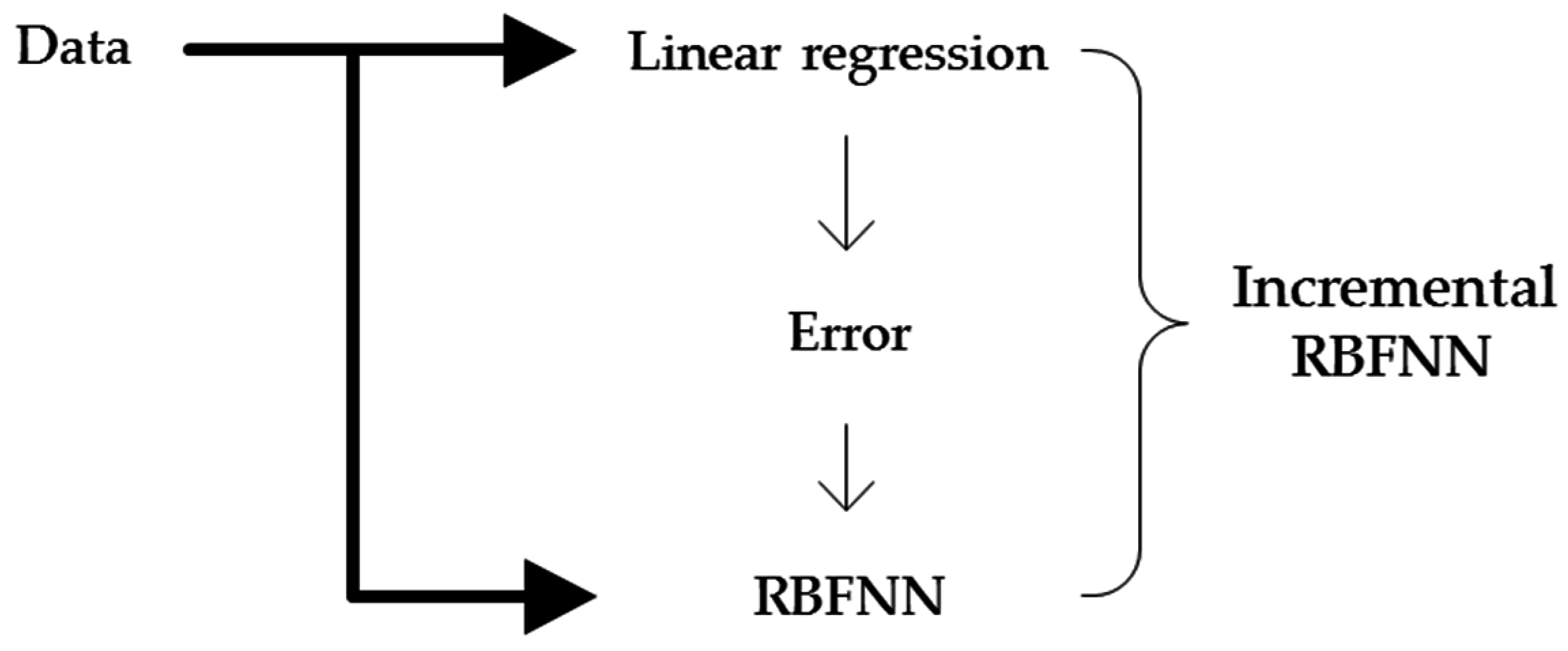
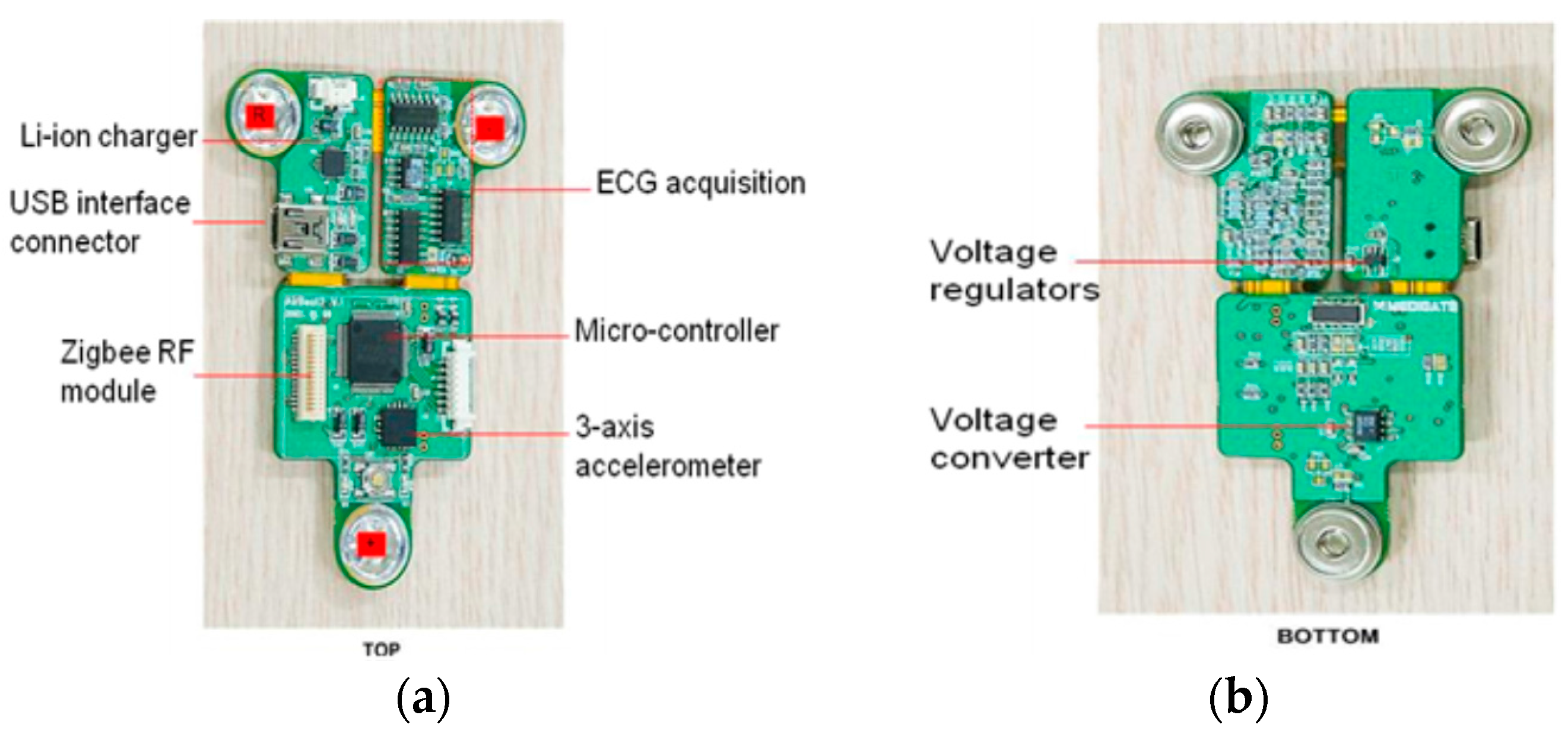
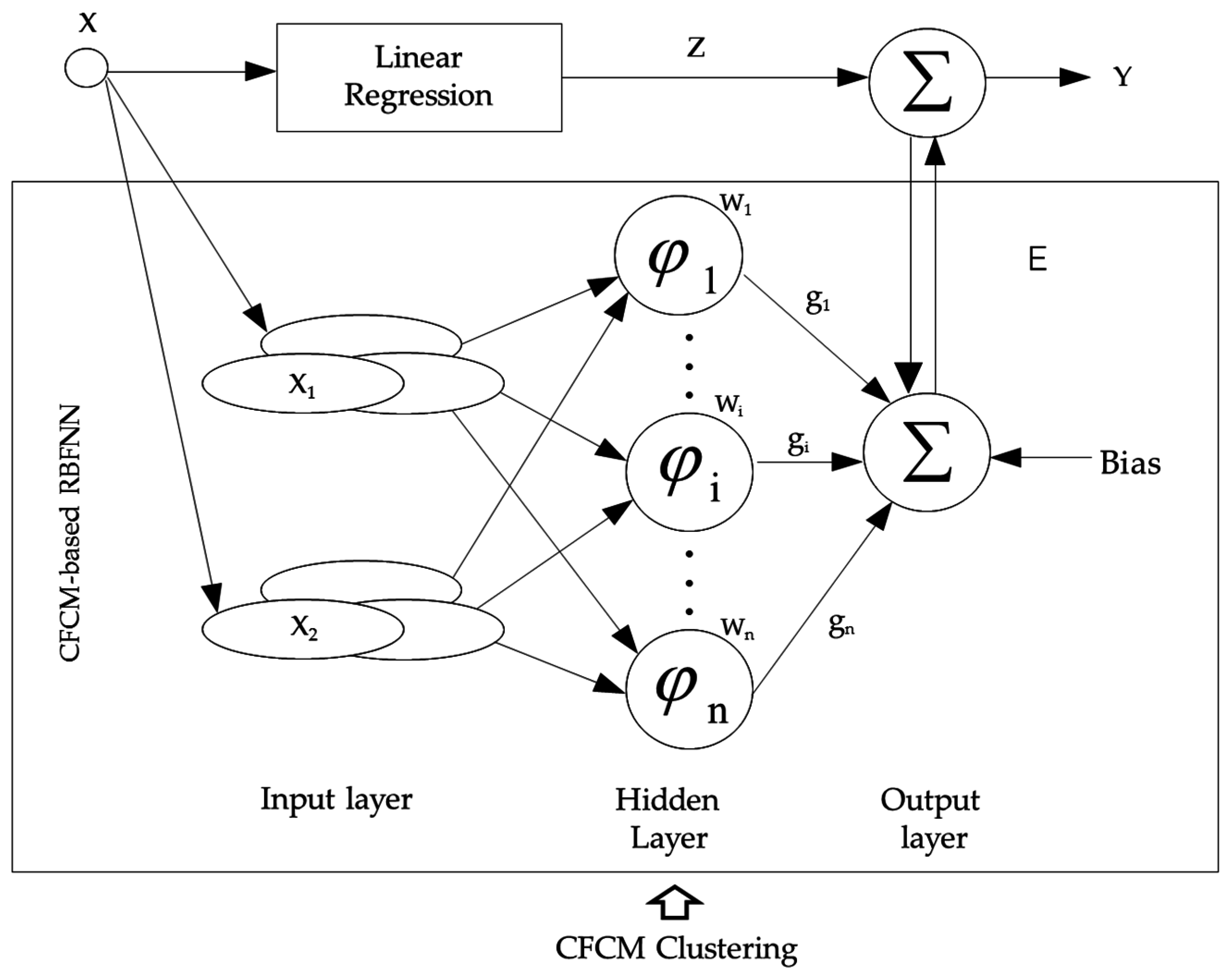
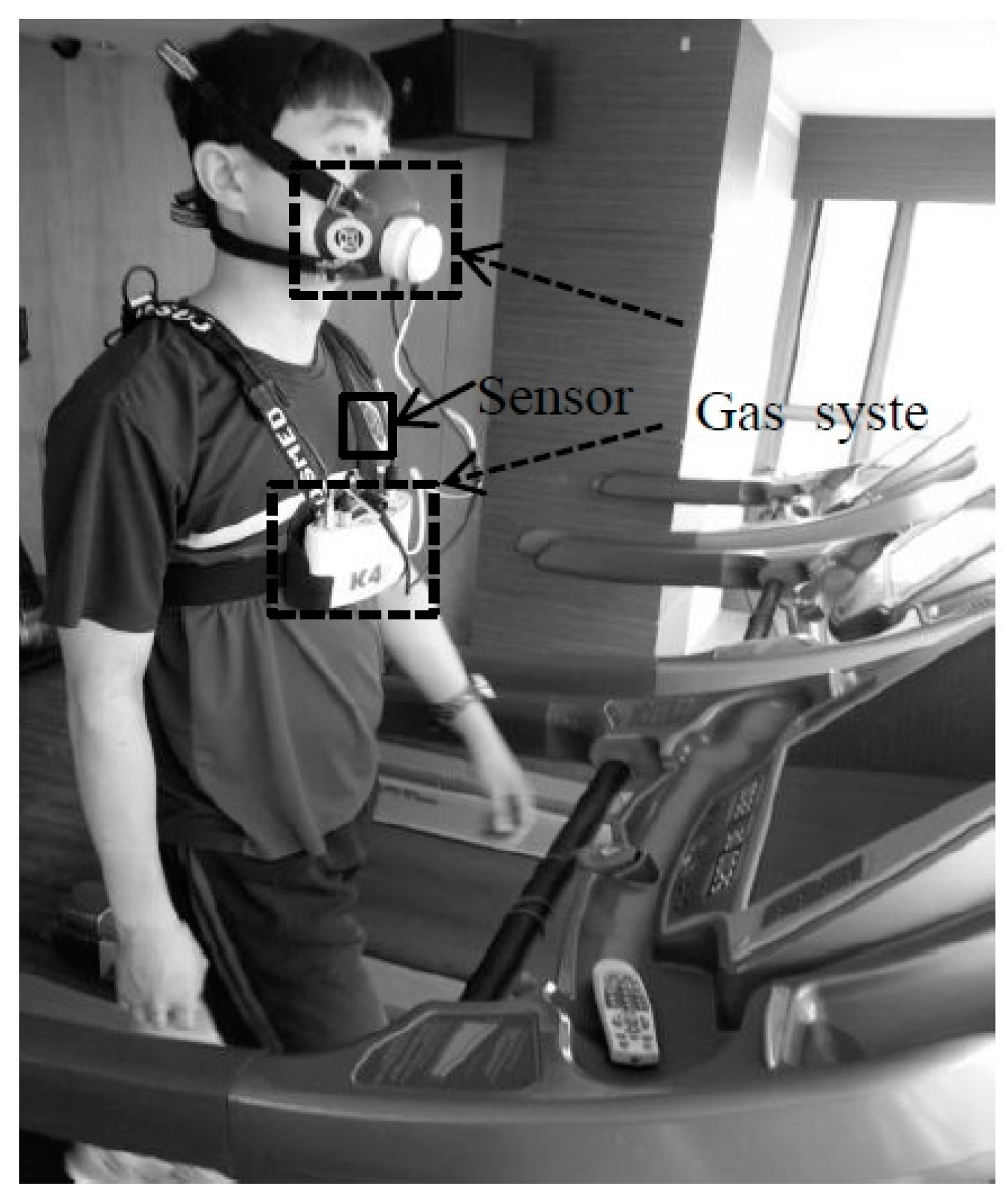
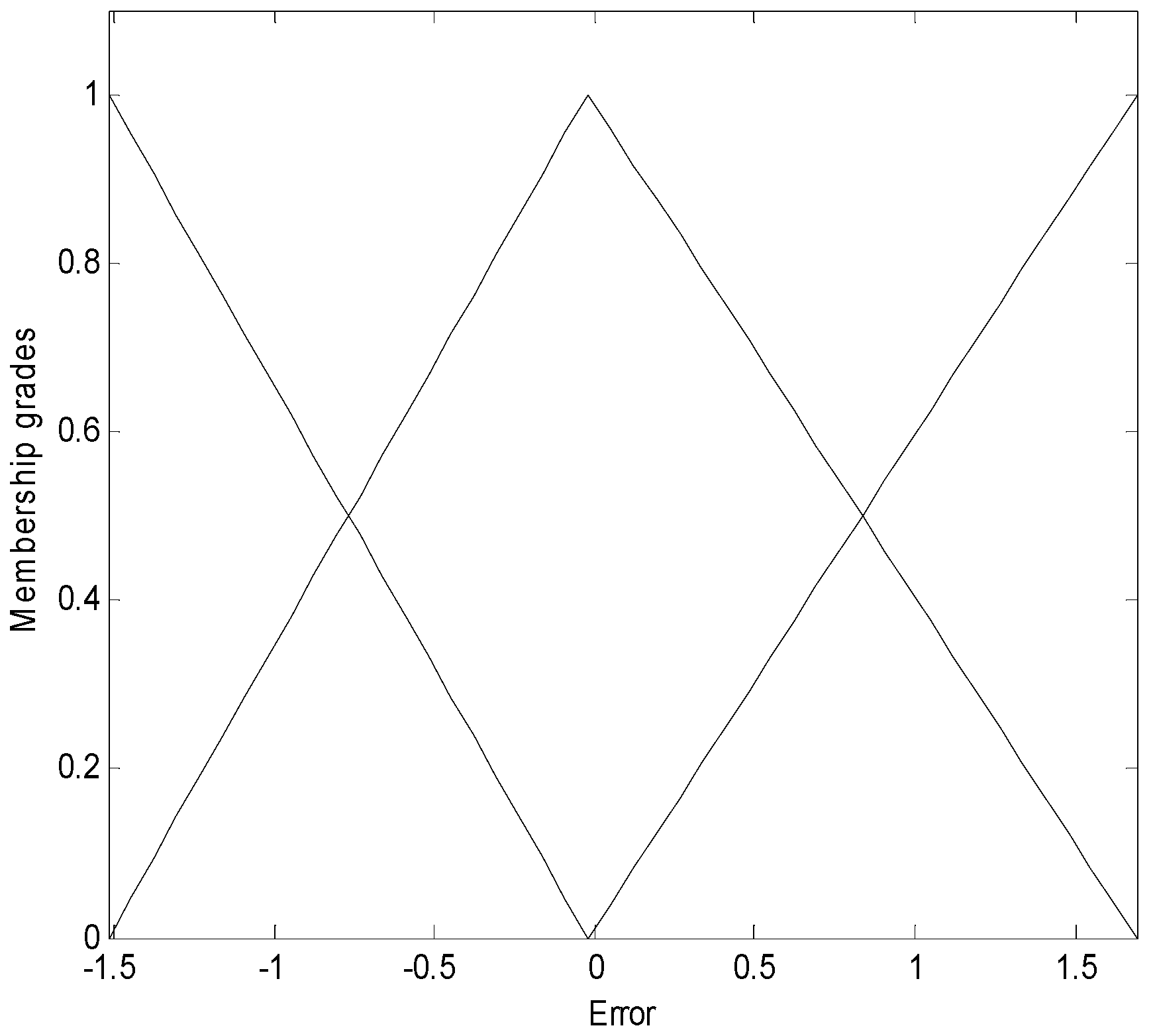
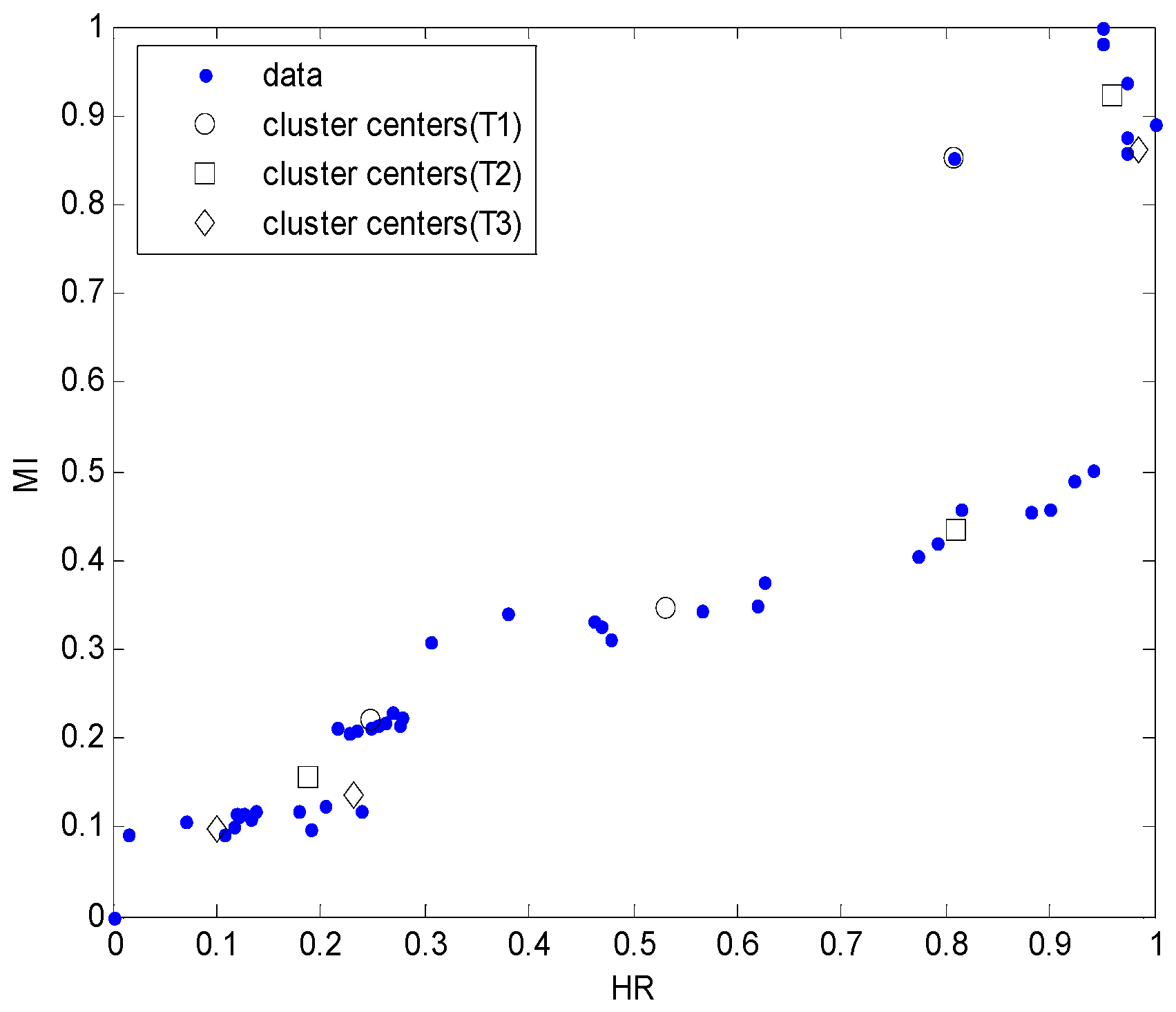
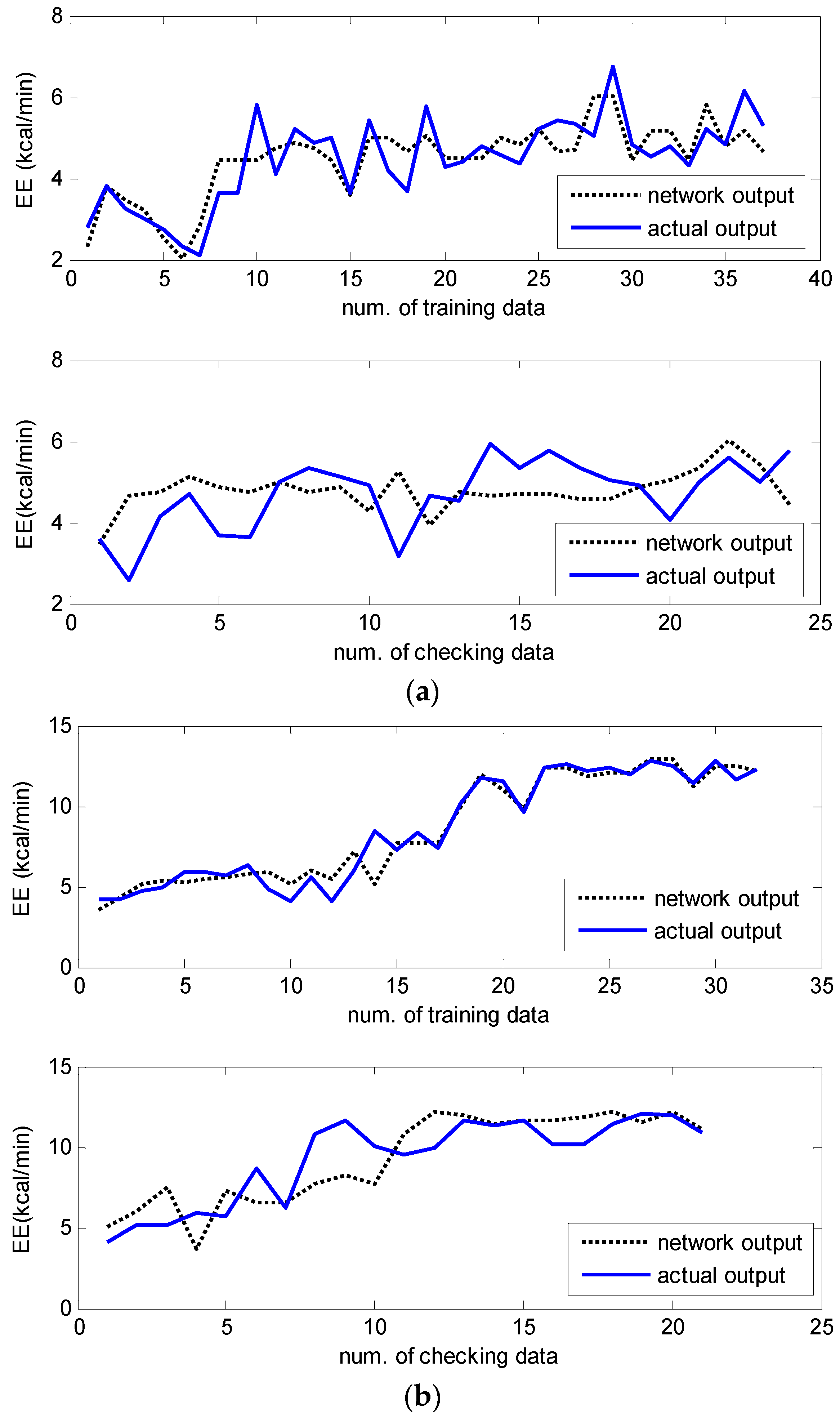
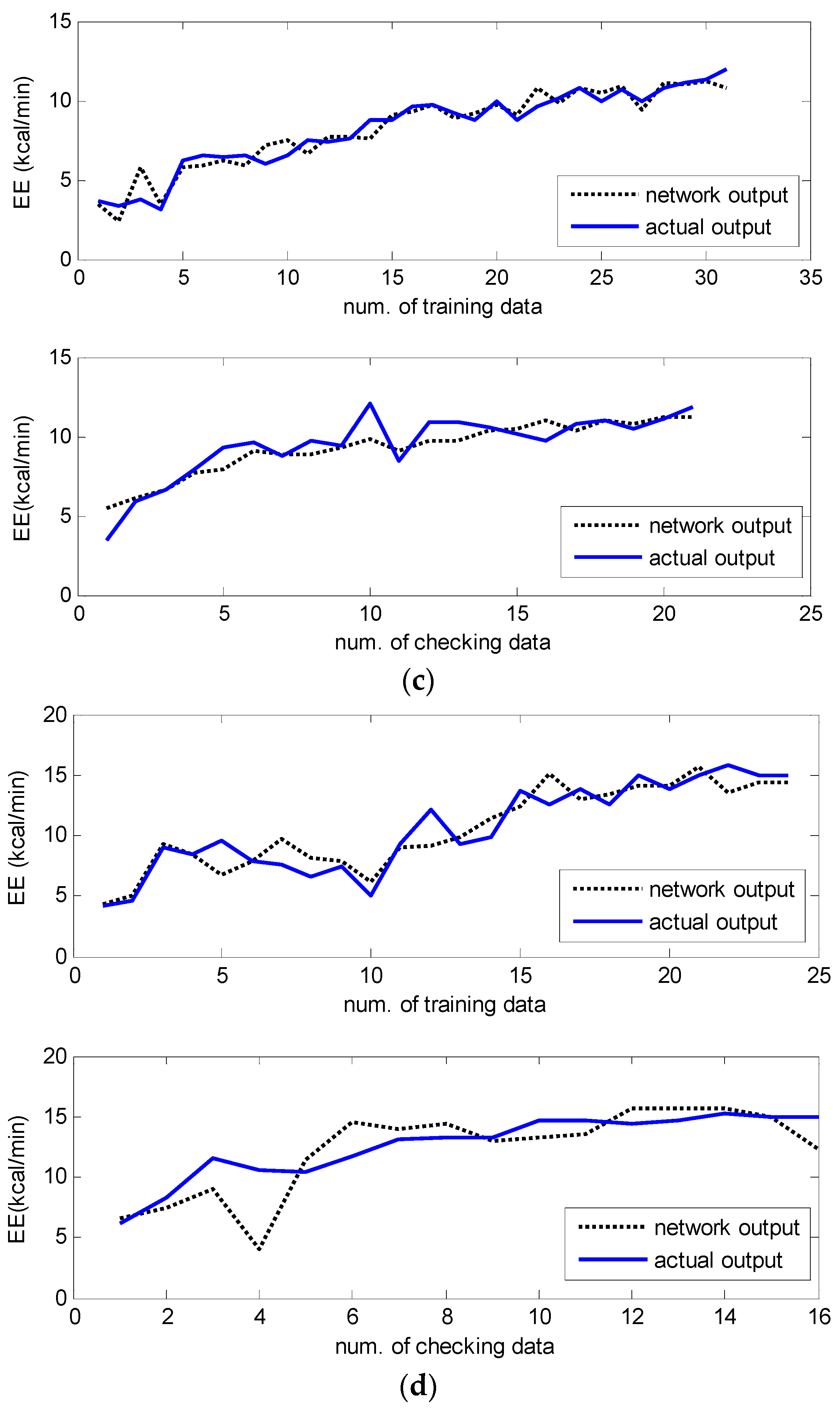
| Variable | Men (N = 17) | Women (N = 13) | ||
|---|---|---|---|---|
| Mean | Range | Mean | Range | |
| Age, year | 26 ± 2.1 | 24–27 | 25.8 ± 3.2 | 23–28 |
| Height, cm | 169 ± 6.7 | 167–180 | 162.1 ± 6.3 | 155–165 |
| Weight, kg | 65.2 ± 9.6 | 59–70 | 52.1 ± 9.4 | 48–57 |
| BMI, kg·m−2 | 22.8 ± 7.1 | 20–23 | 19.8 ± 4.1 | 18.6–21.7 |
| Treadmill Data (Training Data) | Number of Contexts | ||||
| 3 | 4 | 5 | 6 | ||
| Number of clusters per context | 2 | 0.5237 | 0.5089 | 0.4798 | 0.4557 |
| 3 | 0.4722 | 0.4436 | 0.4182 | 0.3834 | |
| 4 | 0.4367 | 0.3832 | 0.3605 | 0.3276 | |
| 5 | 0.3935 | 0.3659 | 0.3050 | 0.2425 | |
| 6 | 0.3691 | 0.3245 | 0.2528 | 0.1821 | |
| Treadmill Data (Testing Data) | Number of Contexts | ||||
| 3 | 4 | 5 | 6 | ||
| Number of clusters per context | 2 | 0.6913 | 0.7506 | 0.7375 | 0.7563 |
| 3 | 0.6627 | 0.7109 | 0.7197 | 0.8622 | |
| 4 | 0.6944 | 0.7903 | 0.7819 | 0.8641 | |
| 5 | 0.7321 | 0.7162 | 3.6389 | 10.938 | |
| 6 | 1.0113 | 1.1930 | 99.955 | 261.54 | |
| Trn_RMSE | Txt_RMSE | |
|---|---|---|
| RBFNN [22] | 0.73 | 0.97 |
| LM (p = 3, c = 3) | 0.65 | 0.95 |
| RBFNN-CFCM [18] | 0.64 | 0.95 |
| Incremental RBFNN | 0.47 | 0.66 |
| Activity | Method | Trn_RMSE | Txt_RMSE |
|---|---|---|---|
| Walking | LM | 0.75 | 1.06 |
| Incremental RBFNN | 0.60 | 0.95 | |
| Brisk walking | LM | 1.47 | 1.82 |
| Incremental RBFNN | 0.96 | 1.68 | |
| Slow running | LM | 0.79 | 1.44 |
| Incremental RBFNN | 0.61 | 1.07 | |
| Jogging | LM | 2.0 | 2.58 |
| Incremental RBFNN | 1.32 | 2.45 |
© 2016 by the authors; licensee MDPI, Basel, Switzerland. This article is an open access article distributed under the terms and conditions of the Creative Commons Attribution (CC-BY) license (http://creativecommons.org/licenses/by/4.0/).
Share and Cite
Li, M.; Kwak, K.-C.; Kim, Y.T. Estimation of Energy Expenditure Using a Patch-Type Sensor Module with an Incremental Radial Basis Function Neural Network. Sensors 2016, 16, 1566. https://doi.org/10.3390/s16101566
Li M, Kwak K-C, Kim YT. Estimation of Energy Expenditure Using a Patch-Type Sensor Module with an Incremental Radial Basis Function Neural Network. Sensors. 2016; 16(10):1566. https://doi.org/10.3390/s16101566
Chicago/Turabian StyleLi, Meina, Keun-Chang Kwak, and Youn Tae Kim. 2016. "Estimation of Energy Expenditure Using a Patch-Type Sensor Module with an Incremental Radial Basis Function Neural Network" Sensors 16, no. 10: 1566. https://doi.org/10.3390/s16101566






